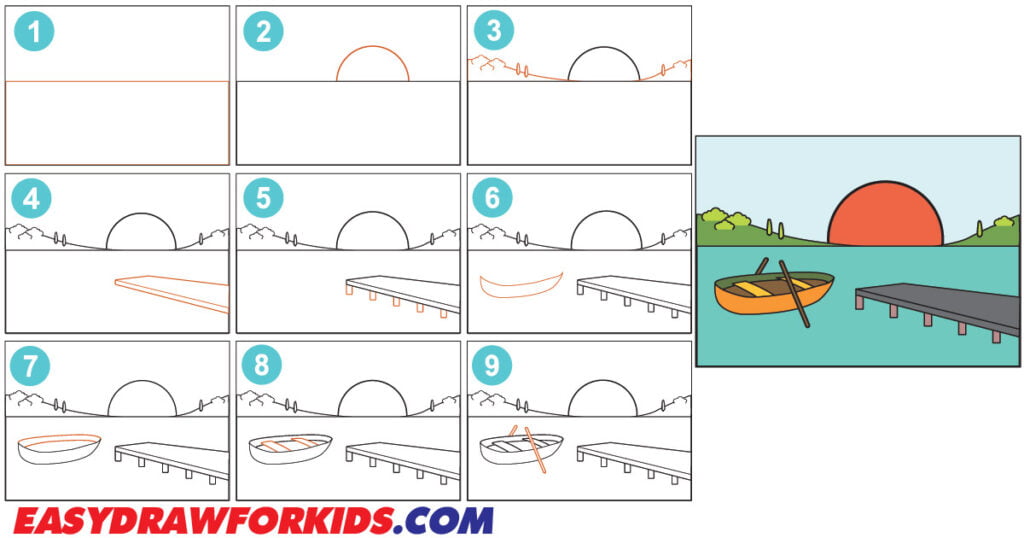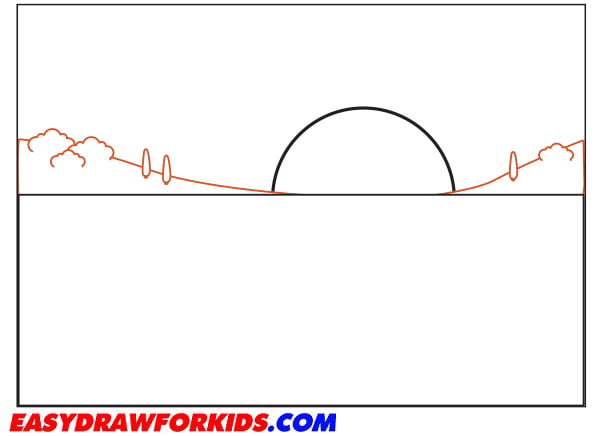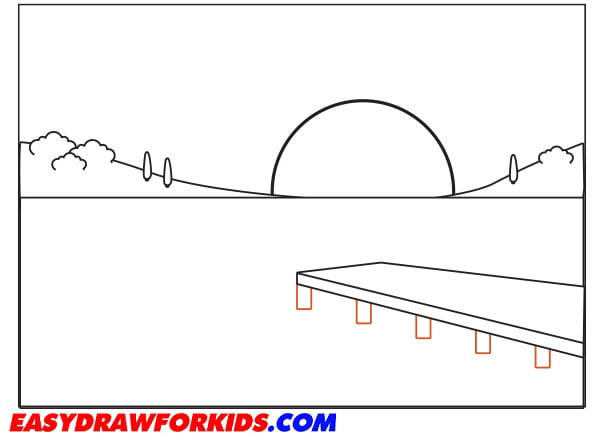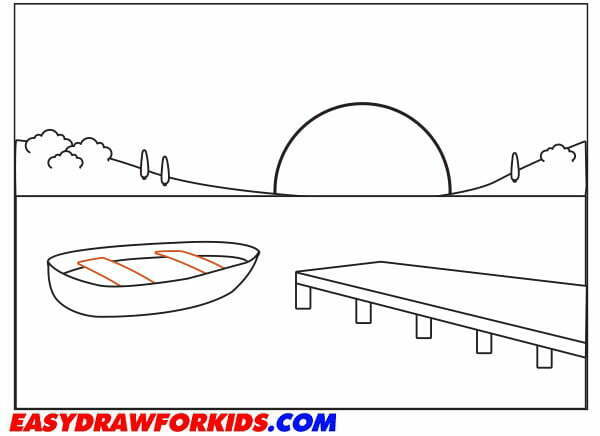If you’re wondering how to draw a sunset, look no further.
Just 10 steps on this guide will help you drawing a beautiful sunset with ease!
How to Draw a Sunset – A Step by Step Guide

Step 1: Draw the horizon line is where the sky meets the land or sea

Step 2: Draw the Sun
Above the horizon line, draw a large half-circle. This will be the setting sun. Place it wherever you’d like on the horizon.

Step 3: Draw the basic shapes as mountains or trees to create background

Step 4: Draw the Wooden Bridge
Draw two parallel lines that slope slightly upward from the waterline to form the sides of the bridge.

Step 5: Draw the bottom of the Bridge
Sketch two pairs of vertical lines between the top and bottom of the bridge for the support posts.

Step 6: Draw the Rowboat
Draw a long curved shape above the waterline for the hull.
The front of the hull should be more pointed, while the back end should be slightly wider.

Step 7: Draw curved lines extending from the front of the boat to represent sides of the Boat

Step 8: Add two smaller rectangle shapes for the seat as you can see in the reference image

Step 9: Sketch two oarlocks by using small rectangular shapes attached to the gunwales at the sides of the rowboat

Step 10: Color the Drawing
The beauty of a sunset lies in its vibrant colors.
Typically, sunsets feature warm tones like oranges, pinks, purples, yellows, blending them gradually from top to bottom.
Add silhouettes of trees, mountains to enhance the depth and contrast of your drawing.

Sunsets make an inspiring subject to draw, with a few step you can create beautiful scenes filled with warmth and lighting.
I hope this guide helpful for those interested in learning how to draw a sunset.






Leave a Reply